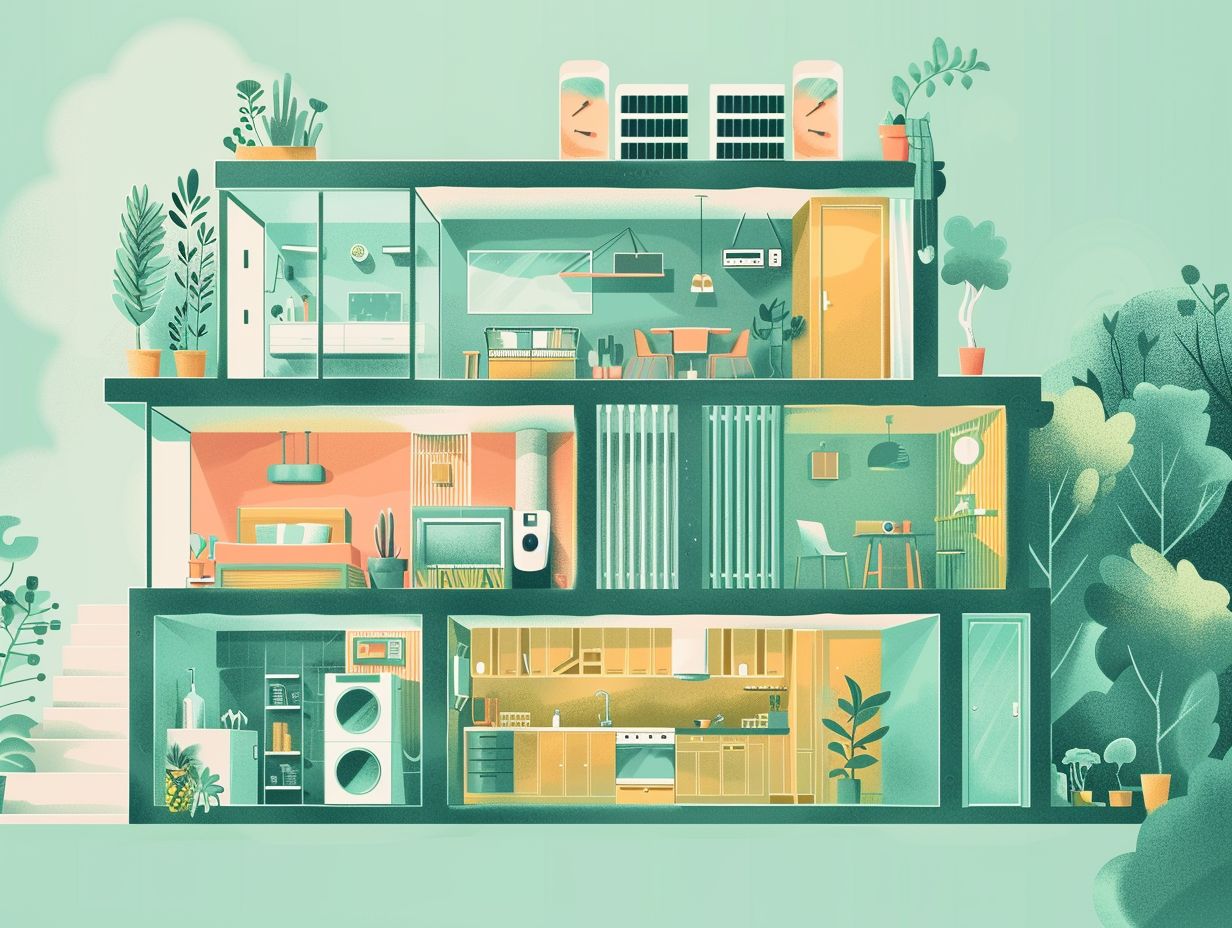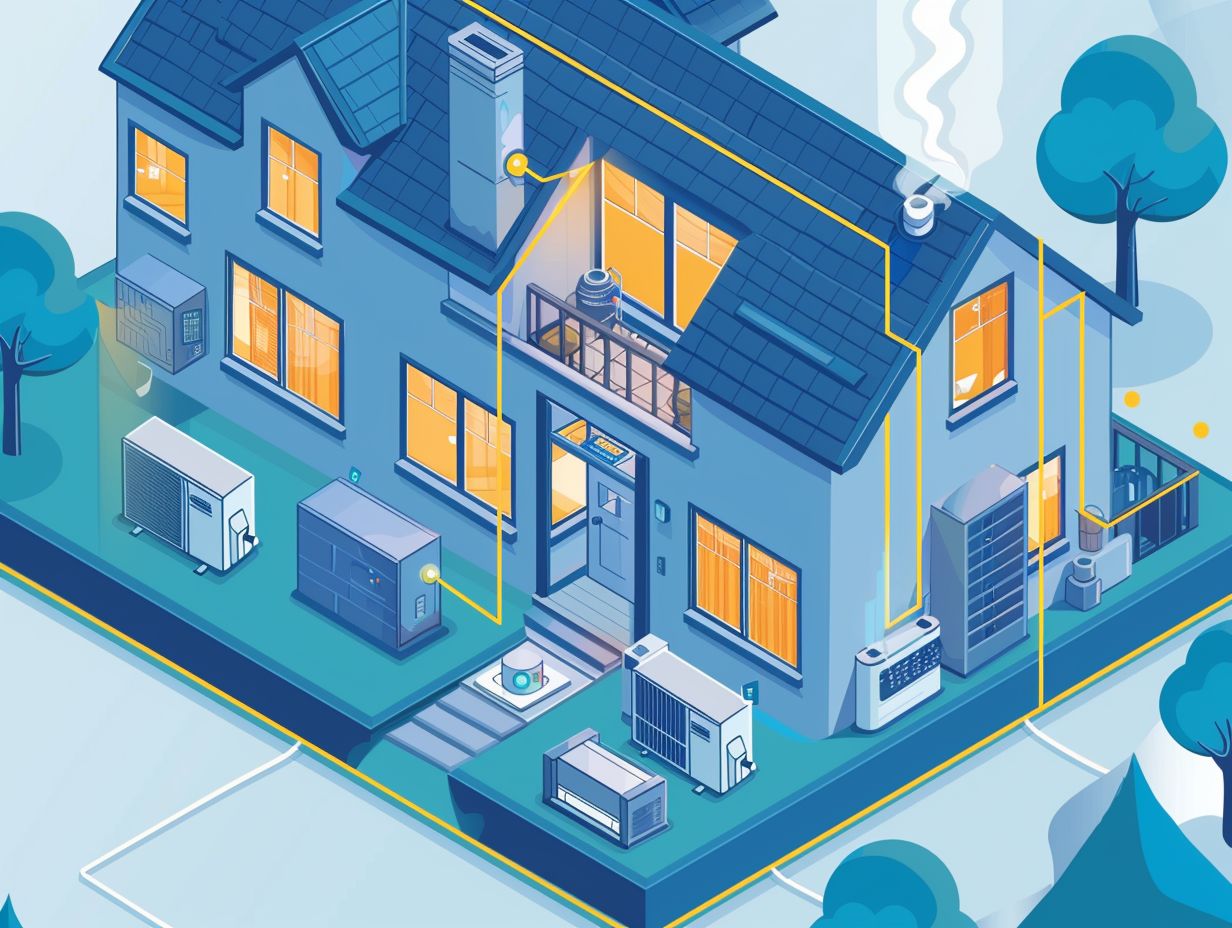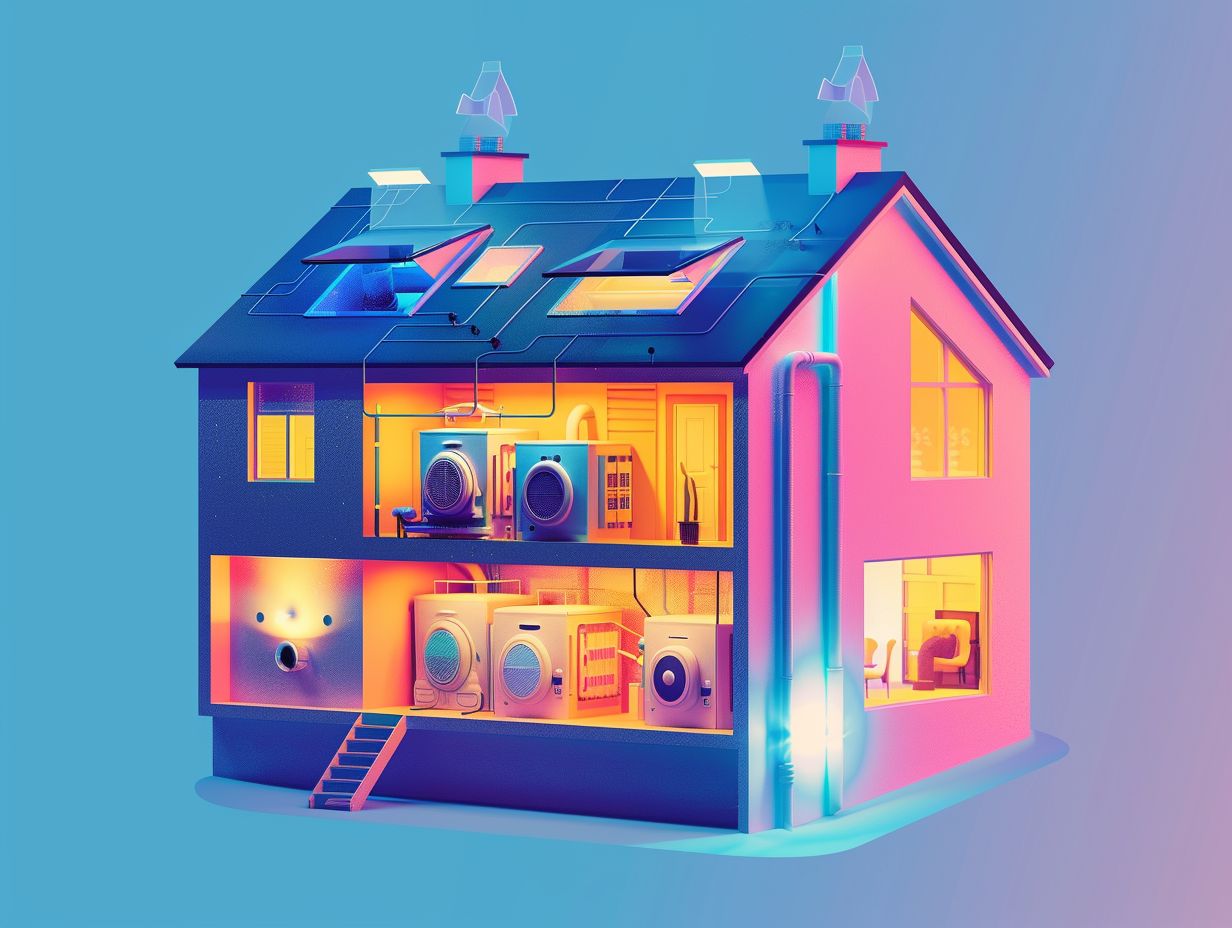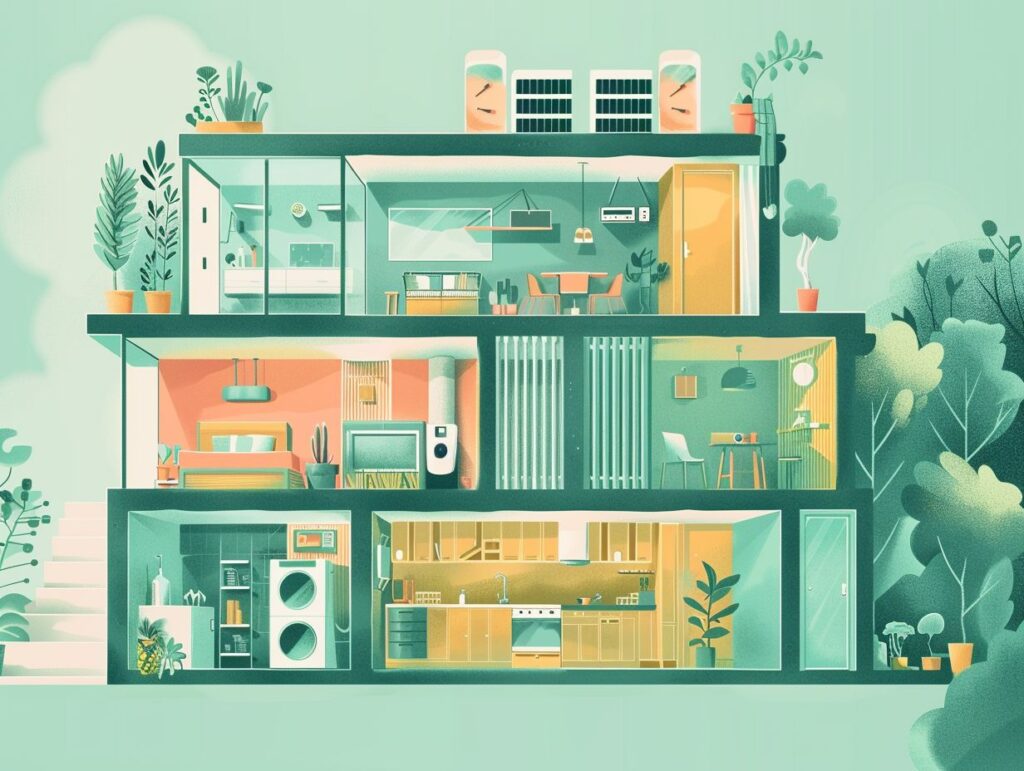Interested in learning about Type 22 radiators and how to effectively zone them? The following will explore the definition of Type 22 radiators, the advantages of zoning, key considerations before installation, zoning methods, and recommendations for successful zoning implementation.
Discover how you can enhance energy efficiency, tailor heating settings for individual spaces, and refine your heating system by utilising thermostatic radiator valves and smart heating controls. Keep informed for professional guidance on optimising the performance of your Type 22 radiators.
Key Takeaways:

- Zoning Type 22 radiators can improve energy efficiency by allowing for individual temperature control in different rooms.
- Before zoning, consider compatibility with existing heating system and the cost and installation process.
- Proper placement of valves and regular maintenance are key tips for effective zoning of Type 22 radiators.
Benefits of Zoning Type 22 Radiators
Utilising Type 22 radiators in zoning offers numerous advantages, such as enhanced energy efficiency and personalised temperature regulation for various rooms or zones within your property.
Through the implementation of zoning, it becomes possible to optimise heat sources, thereby improving overall comfort levels and reducing energy consumption.
This zoning approach facilitates the tailoring of heating patterns to suit specific requirements in different areas of your property. For example, you can maintain warmer temperatures in bedrooms during the night while decreasing heat in unused rooms, resulting in substantial energy savings.
Additionally, zoning provides occupants with individualised control over room temperatures, ensuring everyone’s comfort without energy wastage from heating unoccupied spaces. With this heightened level of flexibility, homeowners can establish a cosy indoor environment while effectively managing their energy consumption.
Improved Energy Efficiency
One of the significant benefits of zoning Type 22 radiators is the enhanced energy efficiency it brings to your heating system. By utilising dedicated zones, you can minimise heat loss and optimise energy usage through precise control using room sensors and setback temperatures.
This zoning configuration offers a more targeted approach to heating, ensuring that specific areas receive heat based on their requirements while reducing energy wastage in unoccupied or lesser-used spaces.
Room sensors play a crucial role in detecting temperature variations and adjusting the heating output accordingly, effectively preventing overheating and unnecessary energy consumption.
Setback temperatures further contribute to energy savings by automatically lowering the heat output when the rooms are not in use, striking a balance between comfort and efficiency in your overall heating system.
Customised Heating for Different Rooms

Using Zoning Type 22 radiators offers the opportunity for bespoke heating solutions designed for individual rooms or specific areas within your property. By integrating Thermostatic Radiator Valves (TRVs), room sensors, and adjusting flow temperatures, you can precisely meet the heating requirements of each room.
This level of customisation in heating options ensures that you have the ability to create comfortable environments that align with the unique needs of each room.
For instance, in living areas where a blend of style and functionality is sought after, strategically placing designer radiators can not only provide warmth but also elevate the overall aesthetic.
Conversely, bedrooms can benefit from sleek and space-saving radiator designs that seamlessly complement the interior decor, offering both warmth and visual appeal.
By optimising the positioning of these radiators and leveraging advanced technology such as TRVs and room sensors, you have the ability to strike the perfect balance between comfort and style in every corner of your home.
Factors to Consider Before Zoning Type 22 Radiators
When considering the implementation of zoning with Type 22 radiators, it is essential to take several factors into account.
These factors include the design of the property, the current heating system in place, an assessment of energy loss, the thermal energy requirements of the property, and the proficiency of the engineers involved in the system design.
Conducting a thorough property assessment is critical as it dictates the placement of radiators, optimal heating distribution, and potential challenges that may arise during the installation process. The compatibility of the system design must align with the layout of the property to ensure effective heat distribution.
The evaluation of energy loss is beneficial in identifying areas where heat dissipation occurs, which aids in developing an energy-efficient heating plan. By analysing the thermal energy requirements, it can be ensured that the Type 22 radiators adequately meet the heating needs of the property.
Engineers can enhance their expertise through specialised training courses that focus on Type 22 radiators, equipping them with the necessary skills to handle intricate zoning requirements effectively.
Compatibility with Existing Heating System
Ensuring the compatibility of zoning Type 22 radiators with your current heating system, including boilers and gas boilers, is essential for achieving optimal performance.
Factors such as weather compensation and property-specific requirements need to be carefully evaluated during the system design phase.
This compatibility is crucial as it ensures that the radiators can efficiently work with the boilers to provide effective heating throughout your property.
By integrating weather compensation features, the system can adjust its output based on external temperature changes, thereby enhancing both comfort levels and energy efficiency.
Property-specific considerations, such as room dimensions and layout, insulation levels, and heating needs, are key in determining the most appropriate setup for Type 22 radiators in your existing heating system.
Cost and Installation Process
When considering the installation of zoning Type 22 radiators, it is essential for you to evaluate the cost implications and understand the process involved.
Important factors to consider include the tube layout, fuel supply requirements, and the necessity of skilled engineers to ensure a successful integration of the system.
The configuration of the tube layout plays a crucial role in achieving optimal heat distribution throughout your property.
Engineers will assess the property layout to determine the most efficient placement of radiators. Additionally, it is important to carefully consider the fuel supply requirements to ensure the proper functioning of the system.
Skilled engineers are responsible for assessing the specific needs of your property to ensure that the installation meets safety standards and operates effectively. Their expertise in managing the technical aspects of the installation process is invaluable for achieving a successful outcome.
Methods for Zoning Type 22 Radiators
You can implement zoning with Type 22 radiators through a variety of methods, such as utilising Thermostatic Radiator Valves (TRVs), smart stats for remote control, modular system designs, and cycle rate adjustments to enhance heating efficiency.
Thermostatic Radiator Valves (TRVs) are essential for regulating the heat output of individual radiators based on the desired temperature in specific rooms. By automatically adjusting the flow of hot water, TRVs ensure consistent comfort levels and prevent unnecessary energy waste.
Alternatively, smart stats offer the convenience of remotely controlling heating settings, allowing users to adjust temperatures even when they are away. Integrating control modules further boosts efficiency by facilitating centralised management of heating zones, guaranteeing each area receives the appropriate heat.
Cycle rate adjustments provide additional customisation by fine-tuning the frequency of the heating system’s operation, resulting in optimised performance and increased energy savings.
Thermostatic Radiator Valves

Thermostatic Radiator Valves (TRVs) are essential components in zoning Type 22 radiators, as they provide precise control over individual room temperatures. It is crucial to understand the setback function and control bands of TRVs to maximise heating efficiency.
You can programme specific setback temperatures using TRVs, allowing for automatic adjustments during designated time periods to save energy and lower heating expenses. By adjusting the control band settings, you can customise the temperature range in which the TRV operates, ensuring optimal comfort levels.
If you are looking to expand your knowledge on TRV installation and usage, there are various training videos available online. These resources offer step-by-step instructions on how to set up and maintain these important heating elements.
Smart Heating Controls
Smart Heating Controls offers advanced features for zoning Type 22 radiators, promoting energy-efficient operations through intelligent mass and surface area calculations. Training modules can enhance your understanding of smart control systems and their optimisation for different heat sources.
The strategic utilisation of smart heating controls enables you to regulate heat output effectively, ensuring that each section of your building receives the optimal amount of warmth.
By incorporating smart zoning, you can fine-tune the temperature settings based on the specific requirements of Type 22 radiators. The ability to programme heating schedules and remotely control the system further enhances convenience and energy savings.
The integration of intelligent sensors and data analytics allows for dynamic adjustments in response to changing conditions, resulting in a more comfortable and energy-efficient living or working environment.
Tips for Zoning Type 22 Radiators Effectively
To ensure efficient zoning with Type 22 radiators, you must focus on proper placement of controls and valves to achieve balanced heating throughout various rooms.
Regular maintenance and monitoring practices, supported by comprehensive training programmes, are crucial for optimising heat source utilisation and control effectiveness.
When positioning controls within each zone, it is important to place them strategically in centralised locations so that users can easily adjust settings to meet specific heating requirements.
Room-specific power needs should be carefully considered when designing a zoning system with Type 22 radiators. Understanding the heating demands of individual spaces allows for better control over temperature distribution and energy consumption.
Training programmes are essential for educating users on how to operate and maintain their heating systems effectively. This ensures long-term efficiency and cost savings by promoting proper system utilisation and maintenance practices.
Proper Placement of Valves and Controls
Ensuring the proper positioning of valves and controls on Type 22 radiators is essential for optimising heat distribution and efficiency. When working with a heating engineer, they can assist in determining the ideal locations based on factors such as wall brackets and potential pipe movement.
Proper valve and control positioning is critical to ensuring that the radiator’s heat is evenly distributed throughout the room, preventing hotspots or areas with inadequate warmth.
Collaboration with professionals in the field can offer valuable insights into the specific requirements of the heating system, considering the unique layout of the space.
Through strategically positioning valves and controls, the temperature regulation can be finely tuned, ultimately improving overall comfort and energy efficiency.
Regular Maintenance and Monitoring
Regular maintenance and monitoring of Type 22 radiators is essential to ensure prolonged efficiency and performance. Engaging professional plumbers for installation and maintenance, especially in unique spaces like loft conversions or conservatories, can help address issues promptly.
By regularly checking and cleaning the radiator fins and ensuring that the valves are working correctly, you can prevent potential malfunctions and maintain optimal heating levels.
Plumbers play a crucial role in ensuring that the radiators are installed correctly in specialised areas such as loft conversions or conservatories, where specific considerations need to be made to maximise efficiency.
Monitoring the system for any leaks or blockages is also vital to prevent any damage or decreased performance over time.
Frequently Asked Questions

Can Type 22 Radiators Be Zoned?
Yes, Type 22 radiators can be zoned using a zoning valve or a thermostatic radiator valve (TRV). Zoning allows you to control the temperature in different areas or rooms of your home, optimising energy usage and providing personalised comfort.
What is a Type 22 radiator?
A Type 22 radiator, also known as a double panel double convector (DPDC) radiator, is a type of central heating radiator that has two panels and two sets of fins. This design allows for increased heat output and efficiency compared to a single panel radiator.
Why would someone want to zone their radiators?
Zoning radiators allows for more control over the temperature in different areas or rooms of your home. This can be beneficial for energy efficiency, as you can lower the temperature in rooms that are not frequently used, and increase it in rooms that are occupied more often.
How do you zone Type 22 radiators?
Type 22 radiators can be zoned by installing a zoning valve, which allows you to control the flow of water to different radiators, or by using TRVs on each radiator. TRVs use a temperature-sensitive valve to regulate the flow of water and adjust the temperature in each room.
Do I need any special equipment to zone my Type 22 radiators?
You will need a thermostat and a control panel to properly zone your radiators. These can either be manual or programmable, depending on your preference. You will also need a zoning valve or TRVs for each radiator you want to zone.
Are there any benefits to zoning Type 22 radiators?
Yes, there are several benefits to zoning Type 22 radiators. It can help to lower your energy bills by reducing the amount of heat wasted in unoccupied rooms. Zoning also allows for personalised comfort, as you can adjust the temperature in each room to your liking.

